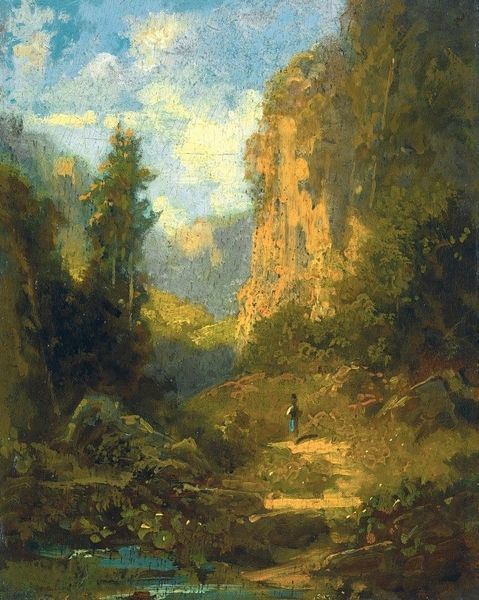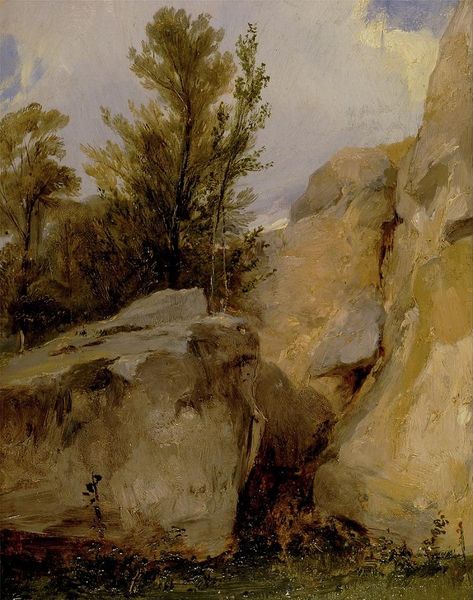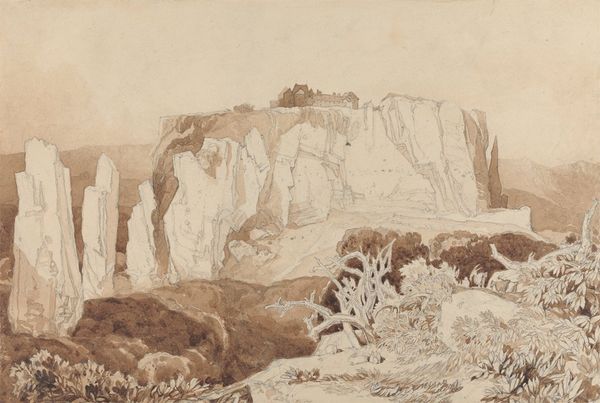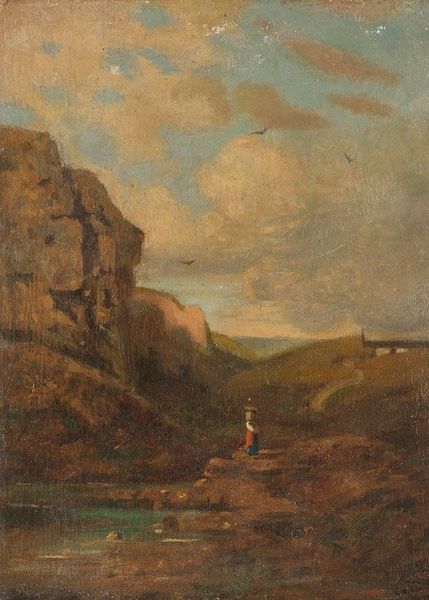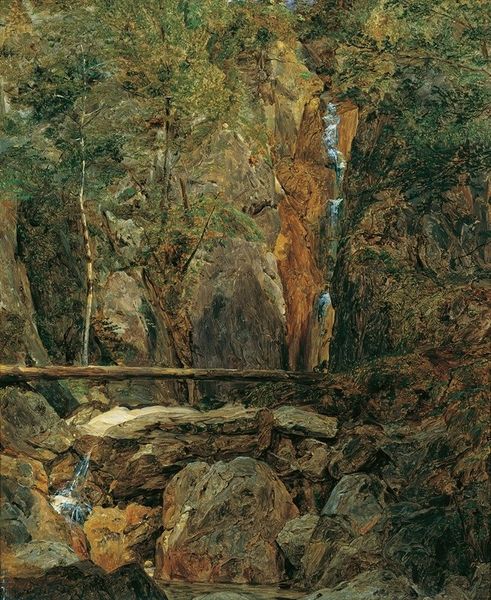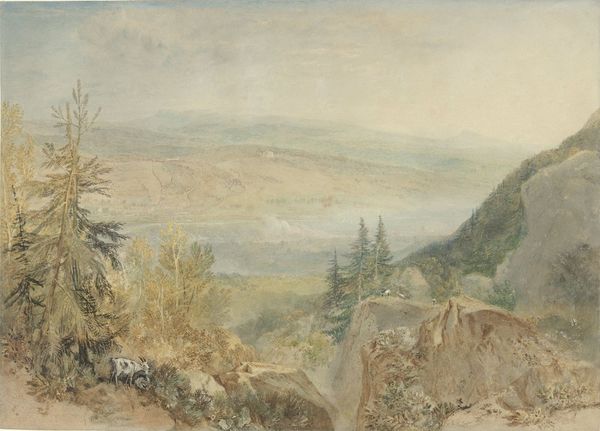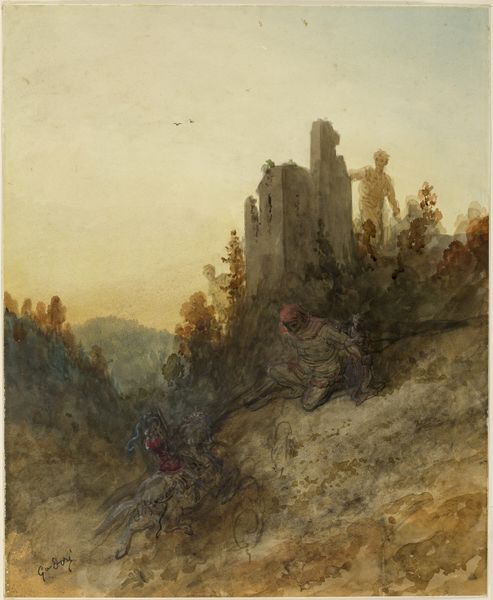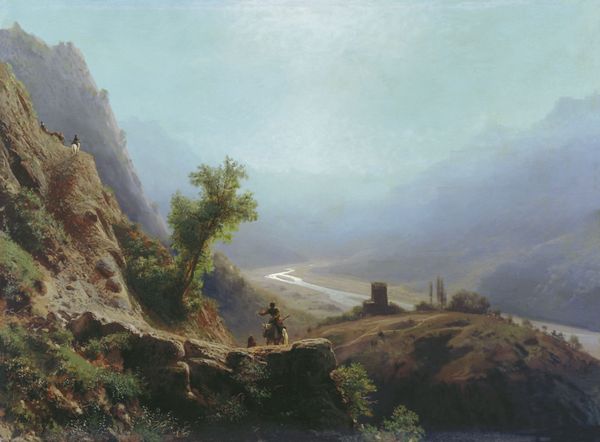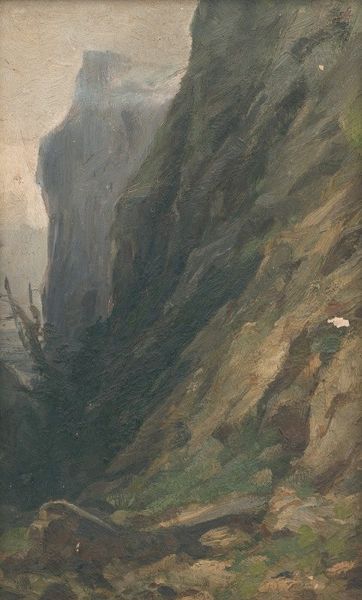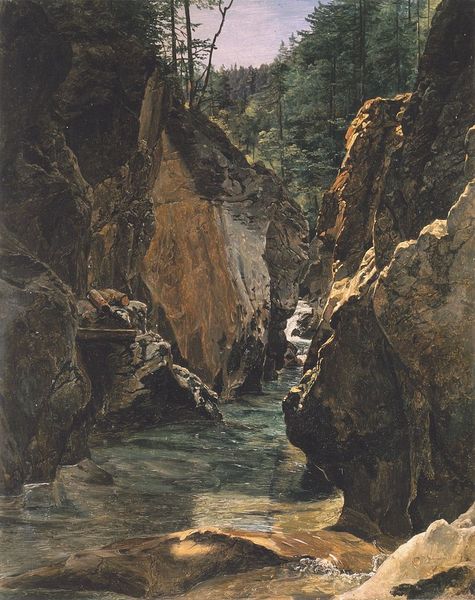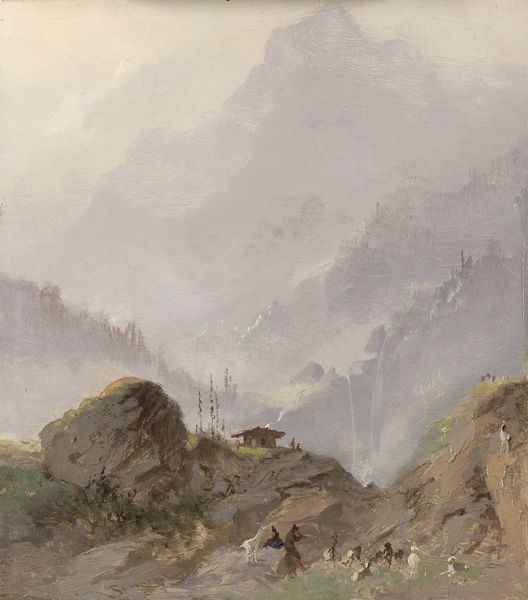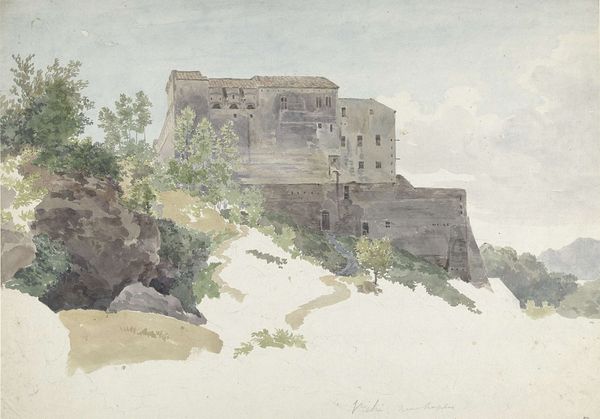
Copyright: Public Domain: Artvee
Editor: Ladislav Mednyánszky's "View of the Ruins of Súľov", created between 1875 and 1885 in oil paint, evokes a melancholic, yet romantic feeling with its depiction of nature reclaiming the remains of human architecture. What do you see in this piece, beyond the surface level? Curator: I see a powerful representation of time and memory embedded in this landscape. Ruins, in art, often symbolize the transient nature of human achievement versus the enduring power of the natural world. What do you notice about the figure within the landscape? Editor: He seems small, almost insignificant against the backdrop of the imposing ruins and rugged rocks, like a passerby observing the scene, I wonder if he's symbolic of the fleeting human presence compared to the permanence of the landscape? Curator: Precisely. This juxtaposition invites reflection on mortality, but also resilience. Ruins aren't just about decay; they're also testaments to survival and adaptation. Note the vegetation reclaiming the stones. The colours and tone suggests that life continues despite loss. This scene carries a dialogue between past and present. It is an exercise in cultural memory. Editor: That’s fascinating! It's almost as though the landscape remembers what happened there, and it can speak for the memory of those who inhabited this place, despite its state of disrepair. Curator: Indeed, Mednyánszky may be inviting us to question the very nature of permanence, the ways in which human structures mimic the environment that predates them. Perhaps the "ruins" speak to a kind of monumentality man has yet to achieve. Editor: Thank you, I would not have noticed these themes on my own. I'll think differently about ruins from now on.
Comments
No comments
Be the first to comment and join the conversation on the ultimate creative platform.
